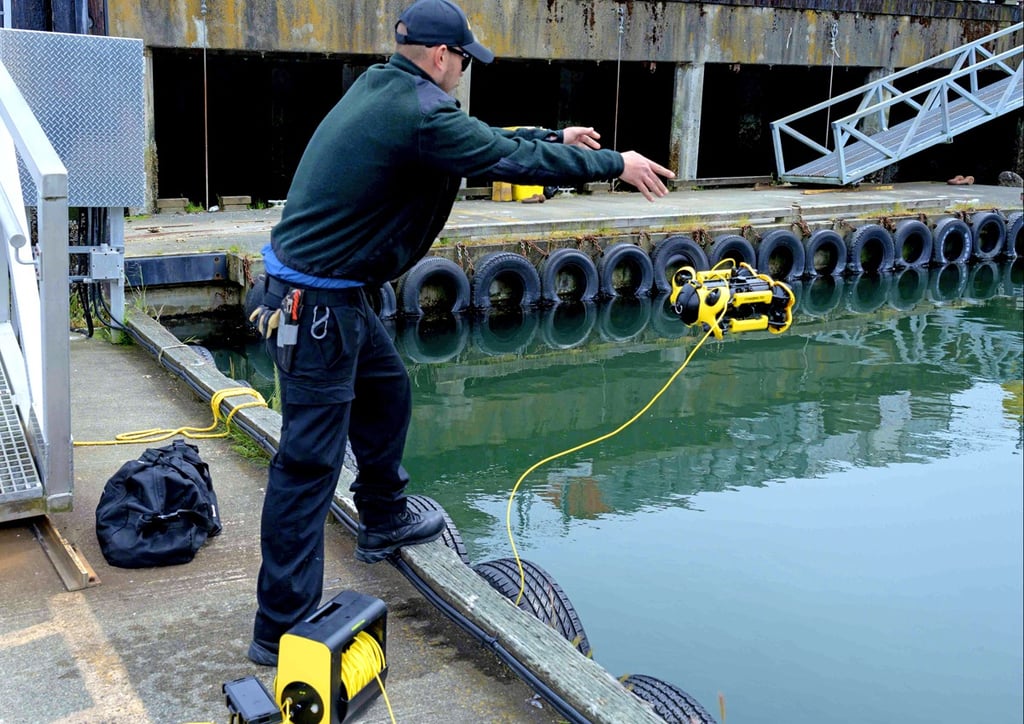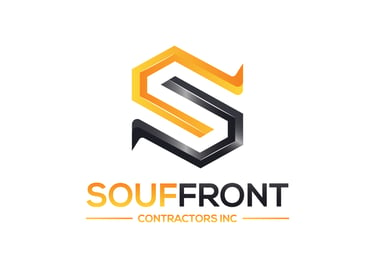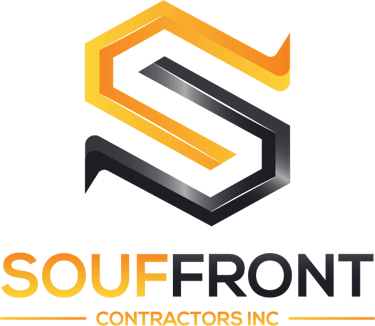Expert Engineering Reports for Comprehensive Seawall Inspections, Repairs, and Full Construction.
Seawall Inspection Process: A Complete Guide
Blog post descriptiSeawall inspections are essential for preserving the integrity of properties close to bodies of water. Routine inspections help identify early signs of wear or damage, allowing for timely maintenance to protect both the seawall and the property it defends. Inspections are especially important after severe weather events, as they can reveal hidden structural issues.on.
Oscar Souffront
11/11/20245 min read
1. Introduction to Seawall Inspection
Importance of Seawall Inspections
Seawall inspections are essential for preserving the integrity of properties close to bodies of water. Routine inspections help identify early signs of wear, damage, or potential seawall violations, such as those outlined here: https://seawallinspectionpro.com/miami-beach-seawall-violation, allowing for timely maintenance to protect both the seawall and the property it defends. Inspections are especially important after severe weather events, as they can reveal hidden structural issues.
How Seawalls Function in Coastal Protection
Seawalls serve as a protective barrier against tidal forces, erosion, and waves, safeguarding coastal structures and land from erosion and flooding. Built from materials like concrete, steel, and vinyl, seawalls mitigate soil erosion, preventing coastal properties from being compromised by water incursion and soil displacement.
Major Causes of Seawall Deterioration
Seawalls face constant pressure from water, wind, and even marine life, all of which can contribute to their deterioration. Key causes include:
Wave Impact and Tidal Movement: Constant wave action causes erosion around the base and weakens the structure over time.
Saltwater Corrosion: Saltwater is highly corrosive to metal reinforcements and other structural elements.
Soil Erosion: Soil can erode or shift behind and around the seawall, creating voids that weaken stability.
Freeze-Thaw Cycles: Temperature changes can lead to cracks in concrete seawalls in certain climates.


Seawall Inspection Process: A Complete Guide
Table of Contents
Introduction to Seawall Inspection
Importance of Seawall Inspections
How Seawalls Function in Coastal Protection
Major Causes of Seawall Deterioration
The Seawall Inspection Process Explained
Overview of Key Steps in a Seawall Inspection
Surface vs. Underwater Inspections
Essential Tools and Technology for Inspections
What to Look for in a Preliminary Surface Assessment
Common Indicators of Deterioration Above Water
Effective Techniques for Surface Inspection
Why Subsurface Analysis is Critical
Underwater Inspection Methods and Techniques
Identifying Common Underwater Issues
Comprehensive Seawall Inspection Checklist
Key Structural Components to Inspect
Above-Water Inspection Checklist
Underwater Inspection Checklist
Identifying and Addressing Common Seawall Issues
Types of Damage: Cracking, Corrosion, and Erosion
Causes and Consequences of Each Damage Type
Effective Repair Options for Identified Issues
Documentation and Reporting in Seawall Inspections
Importance of Accurate Documentation
What to Include in a Detailed Inspection Report
Sample Report Format and Recommendations
Professional vs. DIY Seawall Inspection
Advantages of Hiring Professional Inspectors
DIY Inspection Tips and When to Call a Pro
Selecting a Reliable Seawall Inspection Service
Summary of the Benefits of Regular Inspections
Final Recommendations for Seawall Owners
2. The Seawall Inspection Process Explained
Overview of Key Steps in a Seawall Inspection
The seawall inspection process includes a series of steps designed to assess the seawall’s condition thoroughly:
Initial Visual Inspection – Assess visible signs of damage above water.
Detailed Examination – Using tools to measure cracks, check alignment, and analyze material condition.
Underwater Inspection – Dive inspections or sonar imaging to assess submerged structures.
Documentation and Reporting – Comprehensive recording of findings, photos, measurements, and recommendations.
Surface vs. Underwater Inspections
Surface inspections address above-water conditions, while underwater inspections focus on areas typically unseen yet crucial to the seawall’s strength. Underwater inspections are essential for identifying issues such as scouring, soil erosion, and unseen structural cracks.
Essential Tools and Technology for Inspections
Inspections require specialized tools, including:
Sonar Equipment for subsurface imaging.
Ground-Penetrating Radar to detect subsurface issues.
Inclinometers and Crack Monitors for measuring movement and changes in wall structure.
Underwater Cameras or ROVs to capture detailed underwater visuals.
3. Surface Seawall Inspection
What to Look for in a Preliminary Surface Assessment
Inspectors will first visually examine the seawall for cracks, signs of erosion, or shifting. They look for rust stains, water leaks, and any visible signs of instability or misalignment in the seawall structure.
Common Indicators of Deterioration Above Water
Above-water signs of damage can include:
Cracks in the Cap or Panels – Indicate structural strain.
Rust Stains – A sign of corrosion affecting internal reinforcements.
Leaning or Shifting – Signals foundational instability.
Effective Techniques for Surface Inspection
Inspection techniques include physical tapping to detect hollow areas (indicating voids), measuring tilt, and using tools like moisture meters to assess water infiltration.
4. Underwater Seawall Inspection
Why Subsurface Analysis is Critical
Underwater inspections reveal issues hidden from the surface. Problems such as scouring or foundational erosion can severely weaken seawall integrity and may only be detected through underwater inspection.
Underwater Inspection Methods and Techniques
Diver-Assisted Visuals – Divers conduct hands-on inspections of submerged areas.
ROVs (Remotely Operated Vehicles) – ROVs capture visuals in difficult-to-reach areas.
Sonar Imaging – Provides a full view of the underwater section, detecting cracks and voids invisible to the naked eye.
Identifying Common Underwater Issues
Typical issues found during underwater inspections include:
Scouring and Soil Erosion – Soil displacement around the base.
Marine Growth – Algae, barnacles, and other growth that weakens materials.
Foundation Voids – Gaps in the foundation caused by erosion or washout.
5. Comprehensive Seawall Inspection Checklist
Key Structural Components to Inspect
Key areas include:
Cap and Panels – For cracks, corrosion, and displacement.
Tiebacks and Anchors – Securing the seawall to the shoreline.
Foundation – Underwater base stability is critical.
Above-Water Inspection Checklist
Examine for visible cracks and corrosion.
Check for water seepage.
Inspect for tilting or leaning.
Underwater Inspection Checklist
Assess for scouring and foundation stability.
Look for underwater cracks and voids.
Note marine growth on structural materials.
6. Identifying and Addressing Common Seawall Issues
Types of Damage: Cracking, Corrosion, and Erosion
Each type of damage affects the seawall differently:
Cracking can weaken concrete and allow water intrusion.
Corrosion degrades metal reinforcements, leading to potential structural failure.
Soil Erosion behind the wall creates voids, destabilizing the structure.
Causes and Consequences of Each Damage Type
Environmental Wear – Caused by wave action, leading to cracks and erosion.
Saltwater Corrosion – Affects the longevity of metal reinforcements.
Sediment Displacement – Causes instability and undermines the seawall’s base.
Effective Repair Options for Identified Issues
Repair methods may include:
Crack Injections – Using epoxy or polyurethane to fill and seal cracks.
Soil Stabilization – Filling voids with grouting or other soil stabilization methods.
Corrosion Mitigation – Applying protective coatings to resist saltwater corrosion.
Restoration of Aging Seawalls – For older structures, advanced reinforcement and overpour techniques may be required. You can see a full real-world example here: https://seawallinspectionpro.com/restoring-a-very-old-seawall-using-an-overpour-method-and-modern-reinforcement-techniques
7. Documentation and Reporting in Seawall Inspections
Importance of Accurate Documentation
Detailed documentation enables property owners to track deterioration over time and provides essential information for planning repairs.
What to Include in a Detailed Inspection Report
A thorough report should cover:
General Condition Summary
Detailed Damage Analysis
Photos and Diagrams
Recommendations for Repairs
Sample Report Format and Recommendations
Introduction – General condition of the seawall.
Inspection Details – Notes on findings, measurements, and issues.
Photographic Evidence – Showing damage areas.
Recommendations – Suggested actions and urgency level.
8. Professional vs. DIY Seawall Inspection
Advantages of Hiring Professional Inspectors
Professional inspectors have access to specialized tools and can offer expert opinions on necessary repairs.
DIY Inspection Tips and When to Call a Pro
While property owners can visually inspect for obvious issues, a professional is recommended for underwater and detailed structural inspections.
Selecting a Reliable Seawall Inspection Service
When choosing a service, look for:
Experience in coastal engineering.
Certifications and insurance.
Transparent pricing and detailed reporting.
9. Frequently Asked Questions (FAQs)
1. How often should a seawall be inspected?
It’s recommended to inspect seawalls annually or after major storms. Regular inspections help in identifying issues before they worsen.
2. Can I perform a seawall inspection myself?
While you can inspect for visible issues, underwater and structural assessments should be performed by professionals due to the need for specialized equipment.
3. What is the typical cost of a professional seawall inspection?
Costs vary but typically range from $500 to $1,500, depending on the extent of the inspection.
4. What happens if a seawall is damaged but not repaired?
Unaddressed damage can lead to structural failure, erosion of the land behind it, and potential property loss.
10. Conclusion
Regular seawall inspections are crucial for maintaining the safety and longevity of coastal properties. By identifying and addressing issues early, property owners can avoid costly repairs and ensure their property remains protected against natural forces. For the best results, consider hiring a professional seawall inspection service for a thorough evaluation.
© 2012-2024 Souffront Contractors & Engineers | All Rights Reserved
Estimates@souffrontcontractors.com
Phone: 877-420-7220
© 2024. All rights reserved.


